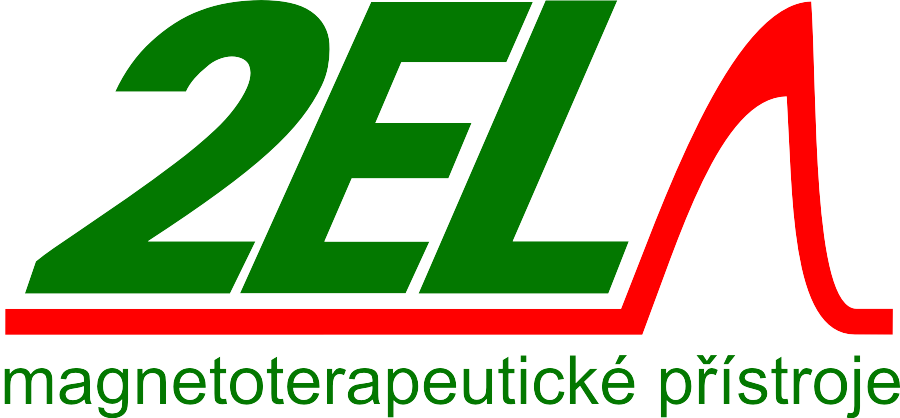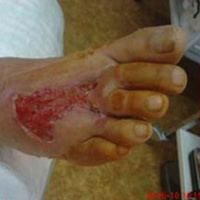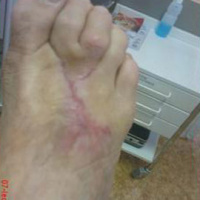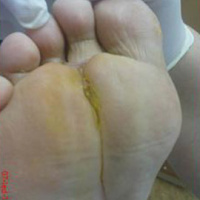Prevention and Treatment of Diabetic Foot
The Use of Combined Magnetotherapy and Carbon Dioxide Therapy
Magnetotherapy is a recognized physiotherapeutic treatment method. It has been used for centuries, with its principles officially patented by E. Smith in 1869. The phrase "even the ancient Romans..." is particularly fitting for this method, as there is documented evidence of magnetic field therapy being used for healing purposes in ancient Rome and Greece.
In general, when an electric current passes through a coil, a magnetic field is generated. If a conductive object, such as tissue, is placed in this field, the magnetic field penetrates the exposed area. If the field is time-varying (pulsed), a weak eddy current, known as Faraday current, is induced in the tissue due to the conductive environment. The most significant effect of this process is the induced vasodilation. The induced electric current causes the pre-capillary sphincters to relax, improving microcirculation in the exposed area. This vasodilatory effect can be considered the primary effect of magnetotherapy.
Improved blood flow brings a range of secondary benefits, largely due to enhanced tissue nourishment. However, magnetotherapy should be viewed as a complementary treatment that aids the body's natural healing processes by improving blood circulation in the affected tissues.
Diabetic Angiopathy – Condition Prior to the Application of Magnetotherapy
and CO2 Therapy (October 30, 2010)
As previously mentioned, the primary effect of magnetotherapy is vasodilation. This phenomenon plays a significant role in the prevention of diabetic foot, as convincingly demonstrated in a 2003 clinical study by Dr. Cecilia Webb from Australia and physiotherapist Sammy Lo from Hong Kong. The study explored the use of low-frequency pulsed magnetic fields for this specific issue. The clinical trial followed a standard design, where a group of patients with type II diabetes was exposed to a magnetic field of 5 Gauss (0.5 mT) and a frequency of 12 Hz. Blood flow in the limbs was monitored, and the results were conclusive—after 30 minutes of exposure, blood flow had nearly doubled. Interestingly, even after the device was turned off, there was no sudden drop in blood flow; 20 minutes after exposure, the blood flow remained significantly higher than at the start.
Earlier research by Boczán from the 1980s demonstrated that a frequency of 2 Hz induces immediate vasodilation that lasts for several minutes, whereas exposure to 25 Hz causes several minutes of vasoconstriction, followed by a strong vasodilation that persists for several hours after the exposure ends.
Furthermore, in vitro and in vivo experimental studies show that endothelial cells exposed to magnetic fields produce proteins that promote neovascularization, particularly fibroblast growth factor 2 (FGF2). Given that one of the complications of diabetes is insufficient blood supply to the lower extremities, magnetotherapy could potentially help address this problem to some extent.
Diabetic Angiopathy – Condition Prior to the Application of Magnetotherapy
and CO2 Therapy (January 7, 2011)
The combination of pulsed magnetic fields and carbon dioxide therapy in the form of a dry bath has shown promising results even in advanced pathological conditions such as diabetic foot syndrome, venous leg ulcers, and pressure ulcers. This combination therapy has been extensively studied by Dr. Jiří Jeřábek, MD, PhD, from the Kladruby Rehabilitation Institute.
The application of carbon dioxide in a dry bath induces direct vasodilation, likely due to a drop in pH caused by absorbed bicarbonate. Additionally, it enhances oxygen release from hemoglobin through the Bohr effect. On the other hand, magnetotherapy acts more indirectly by activating the parasympathetic nervous system.
Together, these therapies synergize, improving tissue perfusion through both mechanisms: enhanced blood flow from the vasodilation effects of CO2 and the parasympathetic stimulation induced by magnetotherapy. This combined approach results in more effective blood circulation, supporting tissue healing and regeneration.

Several companies in the Czech Republic are involved in the production of magnetotherapy devices. The image features the LT 100 device manufactured by 2EL, spol. s r.o. from Nový Bydžov. This company has been engaged in the development, production, and sale of magnetotherapy devices since 1991. In 1994, they became the first company in the world to start manufacturing handheld devices for home use. Their focus is on ease of operation, reliability, affordability, and proven effectiveness.
Thanks to these principles, devices from Nový Bydžov have gained many satisfied users. Additionally, the company proudly supports the clinical indications of their devices with proven results from clinical studies.




